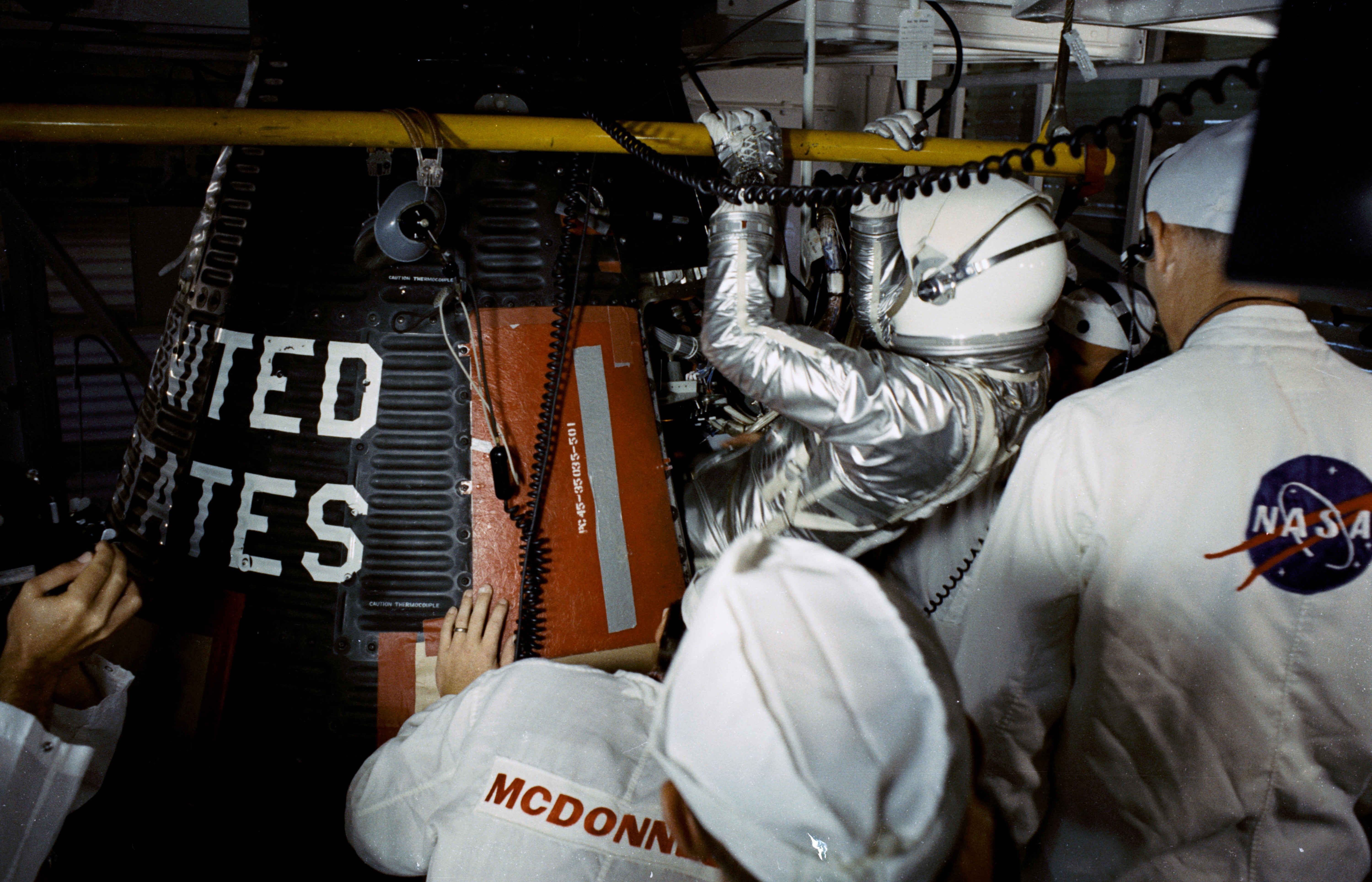 Since its establishment shortly after World War II, the newly independent Air Force has recognized the importance of outer space for national defense. The Air Force benefited from the capture of German V-2 rocket technology and scientists, which formed the basis for early ballistic missile programs. The Air Force began developing space and missile programs, but competition with the Army and Navy saw the service fall behind amid cutbacks to research and development. The Western Development Division, established in 1954, became instrumental in developing early launch vehicles and spacecraft. Work commenced on the first intercontinental ballistic missiles, the SM-65 Atlas and SM-68A Titan I, based on design concepts from the earlier cancelled RTV-A-Hiroc.
Since its establishment shortly after World War II, the newly independent Air Force has recognized the importance of outer space for national defense. The Air Force benefited from the capture of German V-2 rocket technology and scientists, which formed the basis for early ballistic missile programs. The Air Force began developing space and missile programs, but competition with the Army and Navy saw the service fall behind amid cutbacks to research and development. The Western Development Division, established in 1954, became instrumental in developing early launch vehicles and spacecraft. Work commenced on the first intercontinental ballistic missiles, the SM-65 Atlas and SM-68A Titan I, based on design concepts from the earlier cancelled RTV-A-Hiroc.
The Soviet Union’s launch of the world’s first satellite, Sputnik 1, in October 1957 spurred reorganization, and the Air Force became the DoD's executive agent for space in 1961, working closely with the newly formed National Aeronautics and Space Administration (NASA). The Space Race fueled ambitious projects like Dyna-Soar (X-20), a proposed reusable spaceplane, and the Manned Orbiting Laboratory (MOL), a military space station. Both were eventually cancelled due to budgetary constraints and changing priorities. However, the Air Force continued developing crucial launch vehicles, such as the Atlas, Titan, and Thor series, and focused on a range of military satellite programs: communication like the Defense Satellite Communications System (DSCS), navigation like the Global Positioning System (GPS), early warning like the Defense Support Program (DSP), and weather like the Defense Meteorological Satellite Program (DMSP).
Organizational changes continued, culminating in Air Force Space Command's formation in 1982. Space proved crucial in conflicts like the Gulf War Post-Cold War, and the Air Force spearheaded the Evolved Expendable Launch Vehicle (EELV) program for more cost-effective launches. Space-Based Space Surveillance (SBSS) became vital for tracking orbital objects, while the Boeing X-37B spaceplane showcased continued interest in reusable vehicles. Renewed great power competition and concerns about lagging U.S. space capabilities ultimately led to the establishment of the US Space Force (USSF) in 2019, building upon the Air Force's decades-long space legacy. The USSF has since inherited the Army and Navy’s Satellite Communications (SATCOM) and space-based missile warning responsibilities.